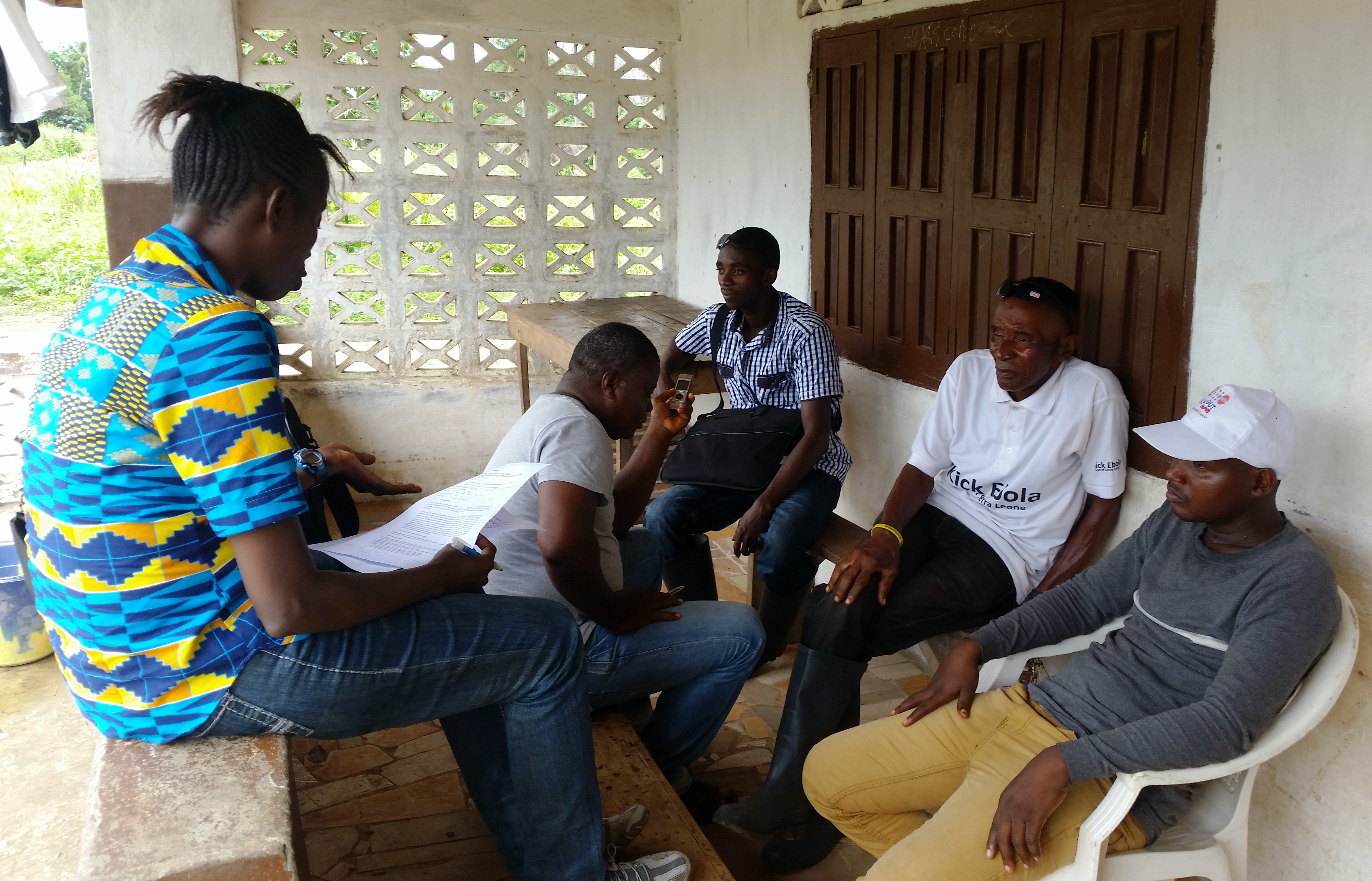What We Can Learn about Epidemic Response from the 2014-15 Ebola Crisis in Sierra Leone
Darin Christensen, Oeindrila Dube, Johannes Haushofer, Bilal Siddiqi, and Maarten Voors just released two papers (main paper here and companion paper here, with a quick summary of the project here) related to the 2014-15 Ebola crisis in Sierra Leone. Their findings have implications for health systems in the current COVID-19 crisis, particularly when it comes to the importance of testing—so we asked Professor Dube, of the Harris School of Public Policy at the University of Chicago, if she’d explain what they found.

Let’s start off by explaining the study you set out to do and why?
In 2011, Sierra Leone was in pretty bad shape health-wise. 149 out of every 1,000 babies would die before age five, the second-worst ranking in the world. The government had passed a new free healthcare initiative and boosted wages for healthcare workers, but was still worried that clinic staff might shirk or charge people if nobody was monitoring them. And as you can imagine, it didn’t have much budget to work with for monitoring.
So we worked with our partners in the Government of Sierra Leone, three international NGOs, and IPA to randomize 254 clinics serving about 15 percent of the country. We tried two approaches:
- The first approach was social recognition for clinic staff. Clinics competed to be the best or most improved in their district (though they didn’t know exactly how they’d be scored). And the staff at the winning clinics received plaques in a public ceremony.
- The second was based on a landmark social accountability study in Uganda. It used community-based monitoring, providing communities with information about their clinic’s performance and convening town-hall-style meetings with community members and clinic staff to discuss improving access to health services.
For a third group of control clinics, life went on as normal, though they were also visited by IPA enumerators.

And what did you find?
When we followed up a year later, we found that in communities with these programs, people had greater confidence in public health workers, more faith in western medicine, and were using health clinics more. In the community monitoring areas, mothers were using the clinics more to give birth. And child health outcomes improved—the likelihood of a child under five dying fell by 38 percent, while measures of child wasting and vaccination rates also improved.
Mothers were using the clinics more to give birth and child health outcomes improved—the likelihood of a child under five dying fell by 38 percent.
But then…
Then the Ebola epidemic hit in May 2014. I remember nervously watching the news as the first few cases emerged, first in Guinea, and then in Sierra Leone. Then the few cases turned into several, and the epidemic swept closer to districts where I had IPA colleagues and research assistants working on various projects. Suddenly they had to pull back as the epidemic swept across the country. Sierra Leone would eventually account for about 14,000 of the 28,000 suspected cases in West Africa.
Key to isolation is getting people to come forward and get tested, which was a big challenge, given understandable concerns about the quality of government clinics and the stigma associated with the disease.
The key to Ebola, like many communicable diseases, is to catch and isolate cases quickly before the disease spreads to family members and neighbors. And key to isolation is getting people to come forward and get tested, which was a big challenge, given understandable concerns about the quality of government clinics and the stigma associated with the disease. Many public health experts estimated that roughly half of all Ebola cases probably weren’t being reported.
The Government and external partners did a good job training health workers on isolation techniques, and by December 2014, 93 percent of healthcare workers had been trained. But you have to remember the history that people have with the healthcare system there. Often people did not have much faith in health providers: they were afraid that they or their loved ones would be isolated and left to die on their own. Here’s where the level of trust in the healthcare system and confidence in health workers is really important – do you know your local clinic? Do you trust the clinic staff to treat and take care of your family member who might die? Think about what you’d do.
OK, so what did you do as a researcher sitting far away?
Our endline survey was over, but a core idea behind the interventions was that building trust and connections between communities and their health clinics would improve people’s willingness to use clinics, and this would improve health outcomes. And Ebola is exactly the kind of situation where how many people survive depends on how much they trust their healthcare providers, and how willing they are to get tested and if they test positive, get treated.
We worked with Government and a local university to secure access to a de-identified version of the database that was used to track Ebola cases in Sierra Leone. This was maintained by Government and external partners, including the CDC. After the epidemic subsided, we looked at whether reported Ebola cases differed in the areas that had received our two interventions.
What we saw at first surprised us: there were more reported Ebola cases in the communities where we had implemented the public-trust improving interventions. But looking a little deeper, we saw it wasn’t that there was more Ebola transmission there—rather, in those communities, people had greater confidence in health staff and the health system and were more likely to go in for testing. This, in turn, allowed for more treatment and faster containment. We estimate that the 60 percent increase in reported cases reduced the disease’s reproduction rate by 19 percent. This ultimately resulted in about a third fewer deaths out of Ebola cases in these communities, and these mortality effects were larger in the areas where community monitoring had been implemented. It was where we got the community involved that we saw the greatest gains.
That tells us that not only are these interventions beneficial under normal circumstances, but that confidence-building measures really pay off and save lives when a crisis hits.
What’s your takeaway for other researchers?
The first lesson I think that’s directly relevant to us now is about trust and testing. We’re seeing with COVID-19 how important it is to test and identify carriers and put in measures to prevent the spread. What we learned in Sierra Leone was that in a time of danger and uncertainty, trust between people and their health providers saved lives. More people got tested and that meant more people could get treated.
The second lesson is that many of us in development work on long-term questions, but a crisis brings on an additional set of challenges. If you can find the data to test how your program works in a crisis, that’s also critical information.
What we learned in Sierra Leone was that in a time of danger and uncertainty, trust between people and their health providers saved lives.
And lastly, if you have a solution that has the potential to make communities and systems more resilient—whether in health, finance (like mobile money transfers which help people weather downturns), information (helping the right people get the information in a way they can use), or something else—crises are also the times when those can be of most help. This pandemic is foremost a health crisis, but it will have massive ripple effects in education, in business and trade, and nearly every other aspect of life. If you’ve spent a career developing expertise in one of those areas, think about what you can do to help.
A summary of the study and results is available here. Professor Dube and Katherine Baicker discuss this study and others on the importance of community trust and healthcare systems during times of crisis in the New York Times.
Researchers or other partners who’d like to work with IPA on COVID-19 responses can email contact@poverty-action.org.











